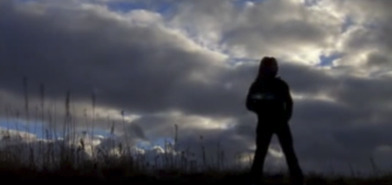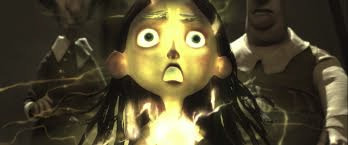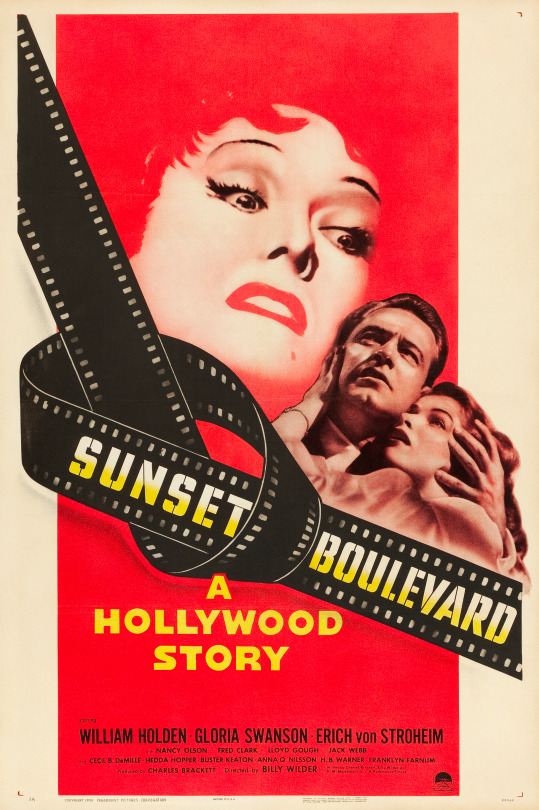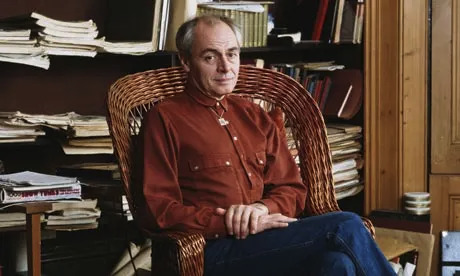#I CANNOT BELIEVE THIS IS REAL GOODBYEEE
Text
‘Now and Then’ - current state of play
My film is a re-imagining of the site of Brighton General Hospital next to my home. Until around 70 years ago, a workhouse operated on the site (for details, see: Gardner, J, (2012) A History of the Brighton Workhouses). Aspects of the austere workhouse are still evident on the site today. I began to think about the stories of the residents of the workhouse – what did they have to endure? With this in mind, I bought the above book by a local author about the history of workhouses in Brighton.
I have always been fascinated by the idea that traumatic events in a particular location can be recorded and replayed at a later time in history and that this might be a basis for ghosts and hauntings – for example, in the blockbuster, Poltergeist, and the BBC drama from the 1970’s The Stone Tapes (Sasdy, 1972). This is one of the key concepts behind the film.
After a lot of thought, I settled on the story of the workhouse being told by a single woman, Agatha, whose infant child was taken from her illegally and sold to a rich couple living in Brighton. This is a variation on the common Victorian practice of unmarried women being compelled to give their children to a foundling home.
The film starts with Aggie telling her story in largely neutral terms and comparing the workhouse and the site’s positive use today as a hospital, but it climaxes with Aggie screaming with the loss of her child, and we see that she is a tormented spectre.The film ends with her anguish fading into a sign on the present site, promoting a nursery for infant children.
The film will be around 5-6 minutes long and will consist of edited original footage taken on the site in the present day. The film will be treated with video effects to alter the pacing, colour and atmosphere of the original footage. I have asked for a drama-trained friend to narrate the film as Aggie and will be using original and library sound effects and music motifs, or possibly drones to punctuate the soundtrack.
Now and Then – influences from other artists
1. Brian Percival - About a Girl

Female voice-over revealing a terrifying truth about motherhood at the end of the film. This film gives a cold dead feeling inside from the casual yet downcast demeanor as the leading character talks about her dysfunctional life and especially the ending, where the girl is revealed to have secretly miscarried a baby and we see her dump it into the canal (“I’ve become good at hiding things”). Both my film and About A Girl attempt to humanise the female main character outside of their tragedies.
2. Tobe Hooper - director of Poltergeist
Paranormal activity centred around past events and the presence of aggrieved spirits. This was a film that made an impact on me from its non-stop tension, even before the presence of the supernatural becomes apparent. Tobe Hooper, ever since creating The Texas Chainsaw Massacre (1974) has achieved many awards, and after this film, it is easy to see why. It also has a similar plot to my initial idea for my film - where a great wrong done in the past creates a ‘haunting’ by aggrieved spirit(s)..
3. Peter Sasdy – Director of The Stone Tape (1972)

The original idea from the film was stones “recording” traumatic events from the past. While the current draft has drifted away from this concept, it still lives on with how Agatha remembers everything about the past as if she died yesterday, despite the superficial veneer of the current day hospital. However, Agatha is a real soul though in my film.
4. David Lynch - Eraserhead, The Elephant Man
His black and white films – particularly The Elephant Man
In the latter, view of Victorian England shot in black and white featuring cruelty and time-specific sounds, sights and atmospheres.
The film always seems to have a sense of foreboding, even when the scene is uneventful, and with a deeply engaging soundtrack. Eraserhead will always always be an influence due to its deliberate disturbing monochrome style, investigation of altered perception and the anxieties of parenthood.


5. James Gardener- Author of: A Complete History Of Brighton Workhouses
A detailed and easy-to-understand book centred around the original workhouse in my area. It includes the Brighton General Hospital Site. It helped give a real-life grounding to my supernatural tale.
6. Richard Boden - director of the Blackadder series 4 finale, Goodbyeee
The series as a whole has very little to do with my film, but this is a powerful episode whose fade-out ending and closing-sound inspired the cross-dissolve effects and soundscape in my film - coincidentally both are centered with the cruelty of the past and atmospheric sound. Present and past merge at this point. One of the most popular scenes in TV drama/comedy and understandably so too.
7. Piotr Obal – various films and still images
Obal is an independent artist who works with art, music and still photography. Occasionally, he teaches youths how to work at the computer like me (!) when he was helping out with an arts award I was studying for. Below is one of his images that has been an influence on me and the film. I love his Photoshop collages and the wonderful images he posts from his native Poland.

Work by Piotr Obal
8. Nalini Malani- for her immersive installations, ‘disgraced’ women under partiarchy, history and mythology, miscarriages of justice.
I found out about Malini when I was writing my essay on her work in the Diversity module: what started off as just finding out about an artist for the sake of my writing became a long-lasting admiration and inspiration from an artist who not only knows where she is coming from (from her upbringing hugely affected by India and Pakistan’s partition) but willingly sticks her neck out for those oppressed by society and history, and confidently shows her creations to the world. A particularly relevant aspect of her work is her use of the supernatural and mythology stories and myths to highlight aspects of women’s oppression throughout history.
9. Chris Butler- director of ParaNorman
A key influence, supposedly aimed at children, I used the same of the spectre in this moving animation, and I was influenced by its themes about the cruelties of humanity and how we “moved on”. The spectre is a ghost of a falsely accused of being a ‘witch’ who wreaks her revenge on those who persecuted her.

It was also a strong influence that is more powerful at its climax and twist. In-depth look at how prejudice destroys lives that are never regained - even death provides no relief. Butler is a part of Studio Laika, creating animated films that go beyond the norm.
10. Jacqueline Wilson - the writer of the Hetty Feather trilogy and other such Victorian novels such as Clover Moon.

A part of Jacqueline’s writings is her commentary about how unjust the past could be compared to today: even though her protagonists speak in ways that were customary to Victorians, she keeps them relatable the same way she keeps her modern-day protagonists relatable. The writing style of her books inspired certain characteristics of Agatha’s narration, because it was easy to understand yet engaging.
11. David Lean - Director of Great Expectations (1946)
This film, based on the Dickens book, also brought to mind the cruel period of the Victorian era, and the acting and emotions continued that spirit and my inspiration around my project. I love that it is black and white as well as dialog-centred - I particularly like the formal style of speech - even to express negative emotions- for example:
“Let me point out the topic that in London it is not the custom to put the knife in the mouth for fear of accidents. It's scarcely worth mentioning, Only it's as well to do as others do”.
Miss Havisham, an almost ghostly older woman, in a similar way to Agatha cannot move beyond the terrible wrong done to her - she was left at the alter and devoted her life to training her adopted daughter, Estella, to get revenge on men.I use s similar obsessive, sing-minded hatred to motivate Agatha.

12. Sunset Boulevard (1950)
This film involve a man becoming the object of affection of a former silent movie star, Norma Desmond who overtake his life little by little until she kills him. Norma suffered with the times when silent movies went out of fashion and she is unable to move on, alone in her great house: people told Norma that she had no value and it had an impact on her psyche. She loses all sanity when arrested for killing Joe Gillis as she believes she is back in show business.
The film also explores facades; Norma may live a glamorous if not lonely life, but her mental state torments her, like Aggie has with hers as she wanders around the hospital site driven ‘mad’ with grief and anger.

13. R D Laing: ‘anti-psychiatrist’
'Here was someone explaining madness, showing how the fragmentation of the person was an intelligible response to an intolerable pressure”
Quote from: https://www.theguardian.com/commentisfree/2013/aug/25/rd-laing-aaron-esterson-mental-illness

In discussing the concept of my film with a member of my family, I was directed to the psychiatrist/anti-psychiatrist, RD Laing. In the 1960’s and early 1970’s Laing wrote about how a person’s so-called ‘mad’ behaviour was in fact intelligible when their entire situation and experience was taken into account. He and other writers (like David Cooper) talked about the concept of the ‘double-bind’ where a person’s opportunity to make a decision to resolve the way they were being treated was blocked – perhaps by a member of their family saying that it was not in their personality to be assertive or angry.
This reminded me very much of Agatha; she tries to express her outrage at the great wrong done to her, but she is judged as unworthy and undeserving, so the wrong is seen as justified and her punishment for being the ‘low-life’ who would have a child and have to live in a workhouse. It is circular – she is treated badly because she deserves to be treated badly and so this means that her hatred and insanity brings the great wrong up herself.
Laing is largely forgotten today, but his ideas resonate with certain ideas in feminism and anti-racism. ‘Gaslighting’ is everywhere, both back then and now.
https://www.youtube.com/watch?v=9NnBonXPLJM
3 notes
·
View notes